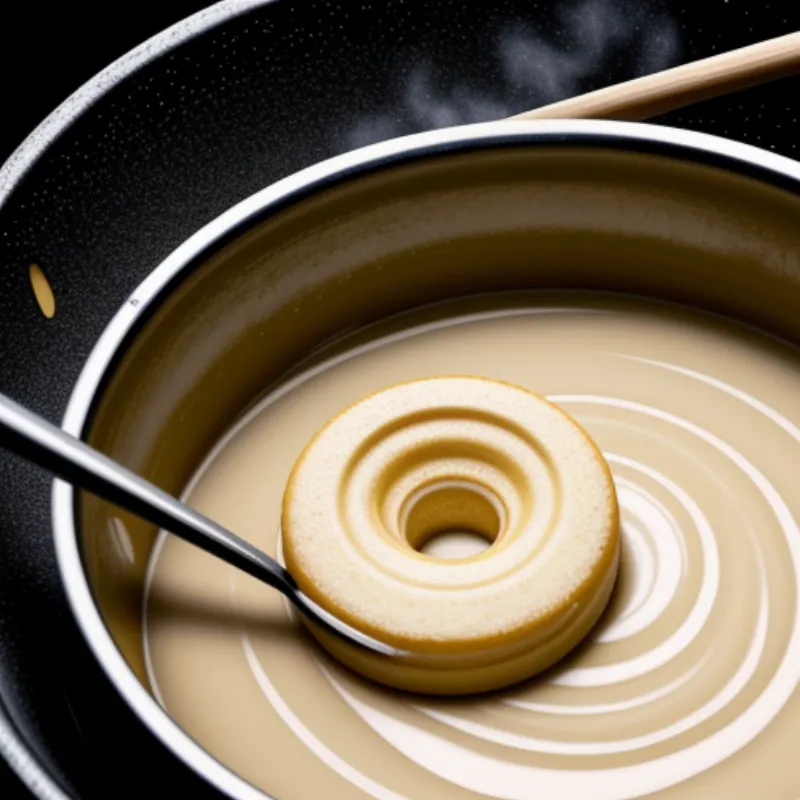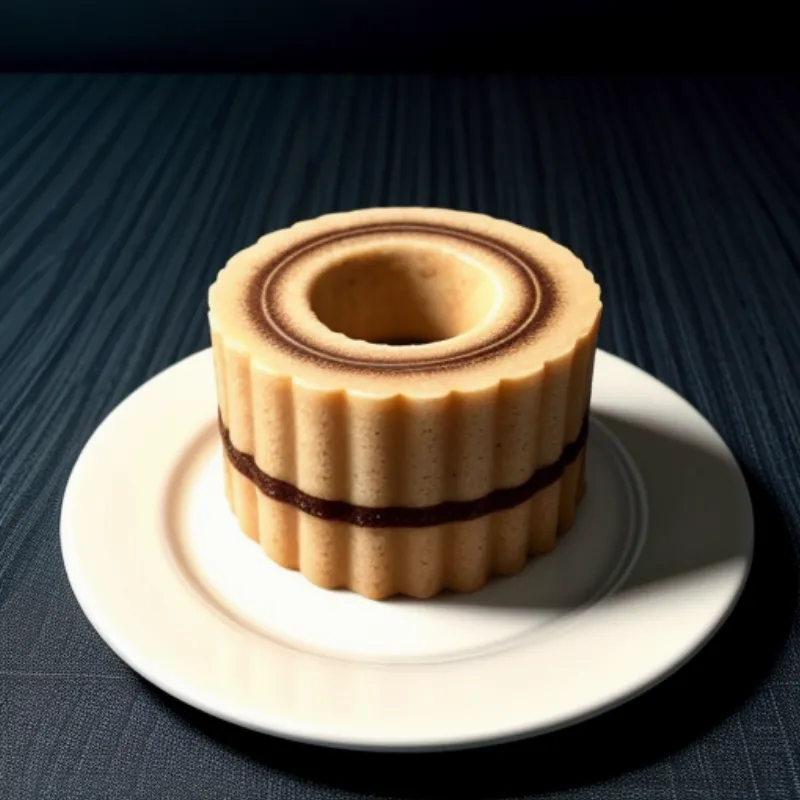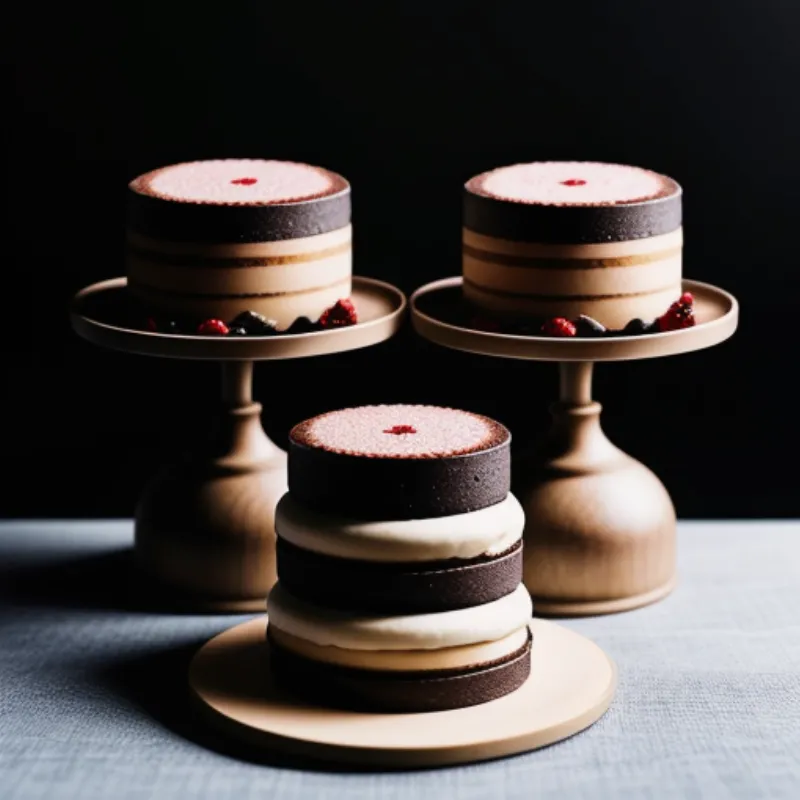The Baumkuchen, a cake with a fascinating history and a name that literally translates to “tree cake” in German, is a testament to the beautiful marriage of patience and precision in baking. With its distinctive layers resembling the rings of a tree trunk, this cake is not just a dessert, it’s an edible work of art. While the thought of making a Baumkuchen at home might seem daunting, this comprehensive guide will walk you through each step, ensuring you too can impress your loved ones with this exquisite treat.
A Bite of History and a World of Flavor
The Baumkuchen’s origins are shrouded in the mists of time, with some food historians tracing its roots back to the Roman Empire. Others believe it originated in Germany during the Middle Ages. Regardless of its precise beginnings, one thing is certain: the Baumkuchen has earned its place as a beloved delicacy across the globe, particularly in Germany and Japan.
What makes the Baumkuchen so unique is its laborious preparation. Thin layers of batter are brushed onto a rotating spit and cooked over an open flame or within a specialized oven. Each layer is allowed to brown before the next is applied, resulting in a cake with anywhere from 15 to 25 delicate rings. The result is a cake that is not just visually stunning but offers a delightful textural contrast between its slightly crispy exterior and its tender, moist interior. The flavor is often described as rich, buttery, and subtly sweet, reminiscent of a pound cake but with a depth all its own.
Unraveling the Layers: Ingredients You’ll Need
For the Baumkuchen:
- 2 cups (250g) all-purpose flour
- 1 teaspoon baking powder
- 1/4 teaspoon salt
- 1 cup (2 sticks) unsalted butter, softened
- 1 3/4 cups (350g) granulated sugar
- 5 large eggs, at room temperature
- 1 teaspoon vanilla extract
- 1/2 cup (120ml) whole milk
For the Glaze (optional):
- 1 cup (100g) powdered sugar
- 2-3 tablespoons milk or water
- 1/4 teaspoon vanilla extract
Possible Substitutions:
- Gluten-Free Option: Substitute all-purpose flour with a 1:1 gluten-free baking blend.
- Dairy-Free: Swap unsalted butter with an equal amount of vegan butter and use your preferred milk alternative.
Assembling Your Baking Arsenal: Tools of the Trade
- Stand Mixer: This will be your best friend for creaming the butter and sugar, ensuring a light and airy batter.
- Rotating Spit: While a specialized Baumkuchen oven is ideal, a rotisserie spit attachment for a grill or oven can be used as an alternative.
- Pastry Brush: This will be your tool for evenly spreading the thin layers of batter onto the rotating spit.
- Offset Spatula: Useful for smoothing the batter and ensuring even layers.
- Parchment Paper: To prevent sticking and ensure easy removal of the baked Baumkuchen.
Crafting the Masterpiece: A Step-by-Step Guide
- Preparing the Batter: Begin by whisking together the flour, baking powder, and salt in a medium bowl. In a separate bowl, cream the softened butter and sugar together until light and fluffy. Gradually beat in the eggs one at a time, ensuring each is fully incorporated before adding the next. Stir in the vanilla extract.
- Combining Wet and Dry Ingredients: Gradually add the dry ingredients to the wet ingredients, alternating with the milk, and mix until just combined. Be careful not to overmix the batter.
- Layering on the Spit: Preheat your oven to 350°F (175°C) or prepare your grill with the rotisserie attachment. If using a rotisserie, line the drip pan with foil for easy cleanup. Securely position a greased and floured metal rod or a heatproof wooden dowel on the rotisserie spit.
- Baking the Layers: Brush a thin layer of batter onto the prepared rod. Rotate the spit, allowing the batter to cook for 2-3 minutes or until lightly golden. Repeat this process, layering and cooking the batter until it is all used. The cake will build up in layers, resembling the rings of a tree.
- Cooling and Glazing: Once all the batter has been used, carefully remove the Baumkuchen from the oven or grill. Let it cool completely on a wire rack.
- The Finishing Touch: While the cake is cooling, prepare the optional glaze by whisking together the powdered sugar, milk or water, and vanilla extract. Once the cake has cooled completely, drizzle the glaze over the Baumkuchen.
 Pouring Baumkuchen batter onto a spit
Pouring Baumkuchen batter onto a spit
Tips and Tricks from a Pastry Chef’s Notebook
- “The key to achieving those picture-perfect layers is patience. Don’t rush the process. Allow each layer to cook thoroughly before adding the next.” – Chef Emily, Pastry Chef and Owner of “Sweet Surrender” Bakery
- Troubleshooting Stickiness: If you find the batter sticking to the brush, lightly grease the brush with butter between layers.
- Temperature Control: Adjust the oven temperature or distance from the heat source as needed to ensure even cooking and prevent burning.
- Creative Variations: Get creative with flavors! Add a teaspoon of almond extract to the batter or incorporate finely chopped nuts for added texture and flavor.
Serving and Savoring: Presenting Your Baumkuchen
Once cooled and glazed, slice the Baumkuchen into wedges and serve. It pairs beautifully with fresh berries, a dollop of whipped cream, or a scoop of vanilla ice cream. Its rich flavor also complements a cup of coffee or tea.
 Sliced Baumkuchen cake on a plate
Sliced Baumkuchen cake on a plate
Beyond the Basics: FAQs and Additional Insights
Q: Can I make Baumkuchen without a rotisserie spit?
While a rotisserie spit yields the most authentic results, you can try baking the batter in thin layers in a rectangular pan. After each layer has cooked, carefully spread another layer on top.
Q: How should I store my Baumkuchen?
Store any leftover Baumkuchen in an airtight container at room temperature for up to 3 days. You can also freeze it for longer storage.
Q: What are some other traditional German cakes I can explore?
If you enjoyed baking the Baumkuchen, you might also like to try making a classic German “Bienenstich” (Bee Sting Cake) or a comforting “Apfelkuchen” (German Apple Cake).
 Different variations of Baumkuchen cakes
Different variations of Baumkuchen cakes
We hope this comprehensive guide inspires you to embark on your own Baumkuchen baking adventure. Remember, the journey is just as rewarding as the delicious destination. So, gather your ingredients, don your apron, and let the enticing aroma of this timeless treat fill your kitchen. Don’t forget to share your baking triumphs (and perhaps even a slice of the cake) with us in the comments below! Happy baking!
For a simpler, yet equally delicious layered cake experience, check out our recipe for a beautiful and easy-to-make Spit Cake: https://familycuisine.net/how-to-make-spit-cake/.
